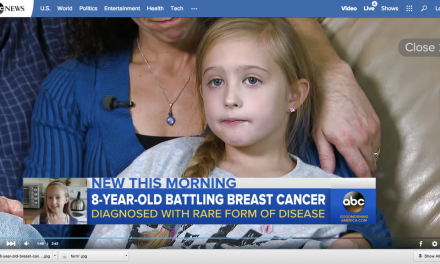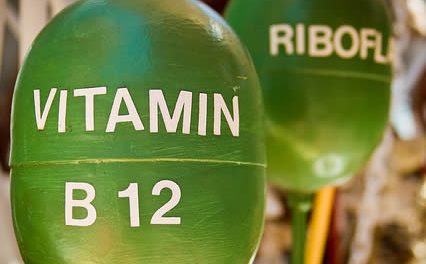In 2018, about 509,640 Americans died of cancer and all the while, Wall Street was greeting and waiting for over 1,813 new cancer drugs to come into human clinical trials. These trials represent billions of dollars of investment capital. You see, the last thing the cancer industry needs is a cure. Indeed it cannot afford one.
And yet, cures exist. Even though many patients will not find them inside a cancer treatment centers; these are often nothing more than “glorified insurance billers.” No, most cancer patients are left to search for cures on their own after the standard cut and burn (chemotherapy and radiation) methods don’t work.
RELATED STORY:
But again, don’t forget, cures exist. Thanks to many brave patients (like the one above) and small cell lung cancer survivor, Joe Tippens.
“First diagnosed with small cell lung cancer in 2016 and with tumors popping up on scans in virtually every organ in his body, in desperation Joe Tippens began using a dog de-worming agent at the suggestion of a veterinarian.”1
With only weeks to live, he started his treatment in the third week of January 2017.
“Three months later at MD Anderson Cancer Hospital in Houston, Tippens anxiously awaited the report of his oncologist who had no idea Tippens started taking the dog deworming medication.
The doctor is reported to have walked up to Mr. Tippens and said: “I am going to have to ask you to leave this hospital, because we only treat patients with cancer here at MD Anderson.”
Within just 3 months his cancer vanished. His insurance company spent $1.2 million before Tippens switched to a $5 a week medicine that saved his life. Daily vitamins and CBD oil were also an essential part of his curative regimen.”1
RELATED STORY:
(As you might imagine, that de-worming drug that has gone up in price since the report of Tippens’ cure spread. Thanks Big Pharma.)
RELATED STORY:
Joe Tippens discusses his own cancer story at his blog and reports that around 40 other formerly “hopeless” cancer patients have reported similar cures. He also continues to take the anti-worming medication as well as Vitamin E complex (tocotrienols, tocopherols), Curcumin (turmeric extract 600 mg/day), and CBD oil daily.
So why did the anti-worming agent used for horses and dogs work?
“Published studies involving this canine drug, fenbendazole, date back a couple of decades. There has been a lot of foot dragging over fenbendazole since it was unexpectedly reported to exhibit potent anti-cancer properties when combined with a vitamin regimen in laboratory animals in a study published in 2008.
Researchers reported that fenbendazole alone or vitamins alone did not alter the size or growth of implanted tumors in laboratory mice. But their combination produced a striking increase in activity of one type of white blood cell, neutrophils, resulting in a no-growth effect. There also was strong inhibition of a protein (hypoxia inducing factor) that induces hypoxia (absence of oxygen) which forces cancer cells to utilize sugar for energy rather than oxygen.
In the laboratory this drug/vitamin combo overcame treatment resistance as well.
Researchers were initially investigating fenbendazole because it was interfering with anti-tumor studies with other drugs.
Given that pinworms are a common problem in laboratories where mice are employed in pre-clinical testing of anti-cancer drugs, use of fenbendazole to clear these animals of parasites is standard practice.
Unexpectedly, fenbendazole halted the growth of implanted human lymphoma cells in rodents. Whereas implanted tumors take hold and grow 80-100% of the time, in this experiment none of the implanted tumors grew among 40 animals over a 30-day period! This was striking.”1
Then in 2011, researchers looked at fenbendazole for its ability to treat the brain cancer glioblastoma multiforme, finding that the addition of fenbendazole halted the growth of these tumors (they also noted that the drug had a long track record of safety and was readily available and low cost). And yet, in 2013 researchers reported that there was no evidence that fenbendazole had any value in cancer therapy and did not warrant further testing.
Then in 2018, additional researchers- this time in India- reported that fenbendazole “exerts cancer cell killing activity at very low concentrations and does so partially by its inherent ability to inhibit the uptake of sugar (glucose) into fast-growing tumor cells.” Cancer cells need sugar to feed their growth but the introduction of fenbendazole prevented this with an enzyme called hexokinase. Also, fenbendazole also has the ability to preferentially kill malignant cells without harming healthy cells.
Why on earth aren’t we using this cancer killer? The cancer industry relies on the fact that around 40 out of 100 Americans will develop cancer over their lifetime so they continue to find treatments rather than cures. It’s all about that profit margin.
“University-based researchers estimate a 1% reduction in cancer mortality has a value of $500 billion and a cure for cancer would be worth ~$50 trillion. There are an estimated 1,813 anti-cancer drugs under development. A cancer cure would dash any hopes of profit for investors in these cancer R&D ventures. Nor would a cancer cure be welcome politically as it would vanquish hundreds of thousands of jobs.”1
John Bailer, an authority on the cancer industry, once said that the national cancer program should be “judged a qualified failure. Our whole cancer research in the past 20 years has been a total failure.”1
We couldn’t agree more. However, there is hope! The takeaway here is that cures do indeed exist. Read, ask questions, do your research, exhaust every possibility, move your body, get clean fresh air and water to drink, eat fresh, whole foods, take deeps breaths, de-stress your life.
There is a huge community of people here who would love to help and walk along side you as you battle.
XO~ Erin
SOURCE:












